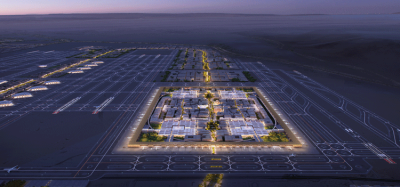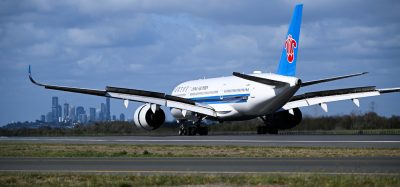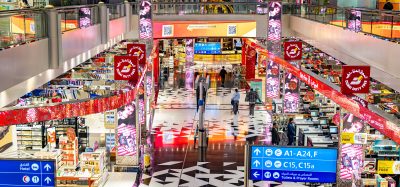Airport Retail: A slice of luxury
- Like
- Digg
- Del
- Tumblr
- VKontakte
- Buffer
- Love This
- Odnoklassniki
- Meneame
- Blogger
- Amazon
- Yahoo Mail
- Gmail
- AOL
- Newsvine
- HackerNews
- Evernote
- MySpace
- Mail.ru
- Viadeo
- Line
- Comments
- Yummly
- SMS
- Viber
- Telegram
- Subscribe
- Skype
- Facebook Messenger
- Kakao
- LiveJournal
- Yammer
- Edgar
- Fintel
- Mix
- Instapaper
- Copy Link
Posted: 9 October 2013 | Michael Payne, Executive Director of the International Association of Airport Duty Free Stores | No comments yet
The duty free industry is worth $50 billion in global sales annually. Michael Payne, Executive Director of the International Association of Airport Duty Free Stores, explains why it is such an integral part of today’s international travel experience
The duty free industry is worth $50 billion in global sales annually. Michael Payne, Executive Director of the International Association of Airport Duty Free Stores, explains why it is such an integral part of today’s international travel experience.
Airport duty free shopping is generally considered to have launched its modern beginnings in 1947, with the creation of an ‘Airport Free Zone’ in Shannon Airport, Ireland. At the time, post-World War II, aircraft had to stop and refuel at Shannon before embarking on trans-Atlantic flights. A creative entrepreneur by the name of Brendan O’Reagan is generally the man credited with starting the modern airport duty free industry as he was the first to begin selling spirits, Irish-made lace and souvenirs to waiting passengers.
Prior to that landmark event, duty free was a little known purchasing opportunity reserved for diplomats, sales to military personnel and crews on board ships, which eventually led to some gift shops opening on cruise liners. And from those small beginnings, the duty free industry took off and today has now reached an estimated $50 billion in global sales annually – the vast majority of which takes place within airports.
The industry’s 66-year history is steeped in tradition and entrepreneurial spirit and continues to attract a cadre of creative and adventurous individuals who elect to venture into this challenging and exciting global industry. In the early days, the young duty free business was considered rather risky as it demanded continuous travel across the globe, often in difficult circumstances. Those adventurous enough to sign up were required to learn foreign languages and familiarise themselves with other cultures in order to have any hope of success. Globalisation was far from the buzz word it is today, making these early recruits true global pioneers.
Today, travellers in nearly every country across the world can find beautifully designed, brightly lit duty free stores offering an endless variety of products and luxury brands. While these tend to fall into the major categories of spirits, fragrances and cosmetics, jewellery, accessories, luggage, confectionery and gourmet foods, there are many other items available, such as those in the growing market for children’s products and an emergence of locally-made products.
Shoppers can also find duty free exclusive products in many locations. These stores provide travellers an opportunity to purchase items during their ‘dwell time’ in airports at favourable prices – which are at minimum tax free – for either personal consumption or gifting, which is an important component of many cultures around the world. The real price advantage for shoppers in airport duty free stores often depends on their point of reference i.e. their home country’s tax structure/policy and associated domestic pricing.
These airport duty free stores and other duty free purchasing opportunities (in-flight, cruise ships, ferries, and border shops) have become an essential element of the global travel experience. There is a certain cache associated with duty free, and the travelling public has come to expect a high quality, service-oriented duty free experience when they travel. As a part of the overall airport experience, duty free shopping at major international airports is not only expected, but is essential and adds to the traveller’s overall sense of enjoyment and excitement which is associated with global travel. It helps brand the airport in the traveller’s mind and in some cases really defines the airport, such as Dubai International for example.
Importantly, duty free sales are a significant contributor to the revenue stream of international airports. The ability of passengers to purchase products upon departure (Note: some countries also offer duty free shopping on arrival) results in profits that go directly towards funding critical airport operations. International airports recognise the growing importance of duty free and, together with their concessionaire partner, make it a priority to keep up with the current trends in product mix, passenger preference and to understand and accommodate passenger convenience so they can maximise dwell time and produce a better passenger experience.
Airports obtain revenue primarily through aircraft landing fees paid by the airlines, food and beverage sales, parking and rental car fees and retail sales. For most international airports those retail sales reflect a substantial sum from duty free purchases. These percentages vary from airport to airport but can be as high as 60 per cent of an airport’s operating budget in certain locations. That revenue subsidises airport operations and without it, airports would be forced to tap airlines and passengers for higher fees and/or face negative impacts on the services they offer. Revenue from duty free sales is a fundamental building block for airport operations and most often an essential component of their budget requirements.
As the duty free business becomes more important for airports, the location, size and imagery of the stores becomes a higher priority in the design and expansion of airport facilities. In terms of airport planning, for example, stores are not an after-thought as they once were, but are a primary focus from very conception of new terminal construction or expansion.
The process duty free operators must follow in order obtain concession rights at airports is rigorous. It’s complex, very competitive and it is almost always done in an open and transparent bid environment. Most airports are in one way or another operated or controlled by public entities such as airport authorities, commissions, cities, counties or even multi-jurisdictional bodies, so an open public bid process is generally required. A public hearing on the competitive bids is often held, in addition to the vast array of regulatory and public safety concerns associated with any airport operation. For duty free, this includes compliance with a strict set of customs controls.
Responding to a request for proposal (RFP) in order to bid on a proposal is an expensive and time-consuming undertaking. Awards are based on many factors and each RFP is different but margin contribution back to an airport is an essential element. Airport authorities need to ensure they have the right partner. They want well-managed and attractive stores, built to high standards and which offer the best available products with first class service. They also understandably want and expect a profit margin from the contract award. In turn the concessionaire operator has to present a persuasive case that they will be the best one to partner with and ensure a reasonable fee back to the airport for granting lease space. The space is expensive.
Suppliers with the right product mix have to be engaged and involved and everyone expects a reasonable return. Volume assumptions about number of passengers, types of passengers, correct product mix, store size and location are all critically important elements of a bid. But there are of course no guarantees as to how operations will proceed once a contract is awarded. Airport shutdowns caused by weather (hurricanes, volcanoes, snow storms, etc.), political strife, viral epidemics, government regulations, economic downturns, or any number of problems can cause major losses to operators. All of this adds to the complexity and risks faced by all parties involved. With any business there are always risks, but they are compounded when dealing with the dynamics of an international market and a diverse travelling public.
Yet, to its great credit, the duty free industry has taken a proactive stance in charitable donations and supports worthy causes across the globe. From funding relief efforts including building schools and hospitals in earthquake-stricken Haiti, to responding to hurricanes and tsunami victims, building housing for those in need, providing water, fixing smiles through surgical techniques and/or training surgeons to perform those procedures, the duty free industry is aware of its global corporate responsibilities and has been most generous in its commitment to help.
So the next time you are departing on an international flight, remember to visit a duty free store and take advantage of this unique experience. To think that this booming industry, which is such an integral part of the global travel experience, began with a small boutique operation in Shannon in 1947 is truly remarkable. Few would have ever imagined how successful this pioneering idea would become.
Biography
Michael Payne has served as Executive Director of the Inter – national Association of Airport Duty Free Stores (IAADFS) for 18 years. Prior to joining the IAADFS, Michael held a number of positions within the U.S. Government of Commerce. His areas of focus included international trade, environmental affairs, infrastructure development and the hospitality and travel industry. Michael is a former Chairman of the Professional Convention Management Association (PCMA) and the PCMA Educational Foundation, and has served as an Advisory Board Member for several hotels and convention bureaus. He also served on the Board of SmithBucklin, the World’s largest Association Management Company.

















